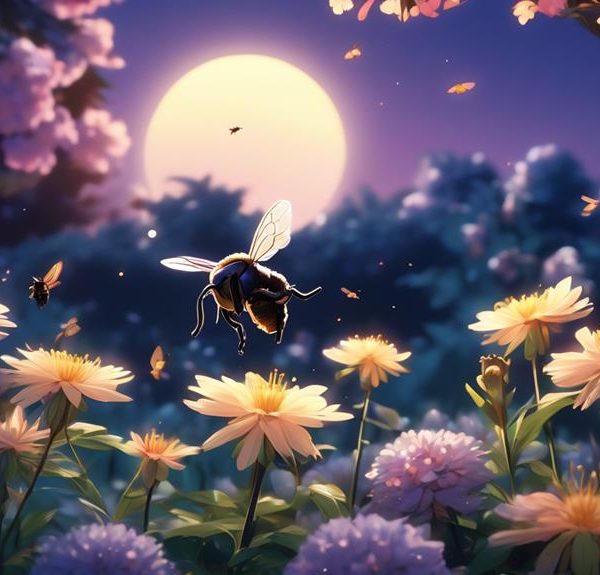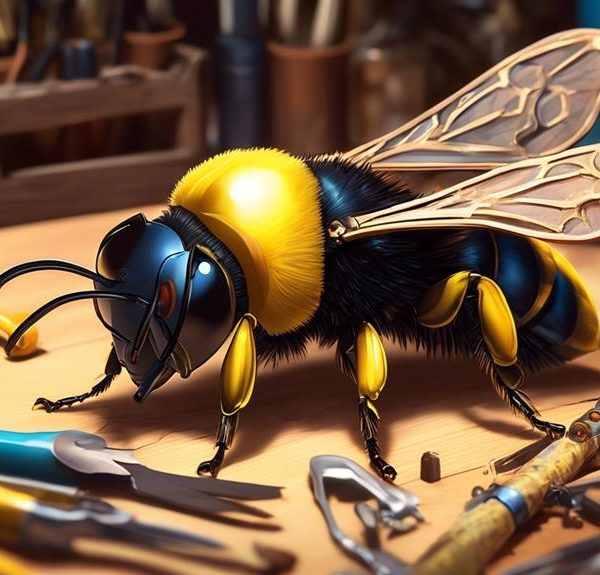Take a fascinating journey into Ireland's ecosystem with the iridescent Violet Carpenter Bee, a vital pollinator with a story worth buzzing about.
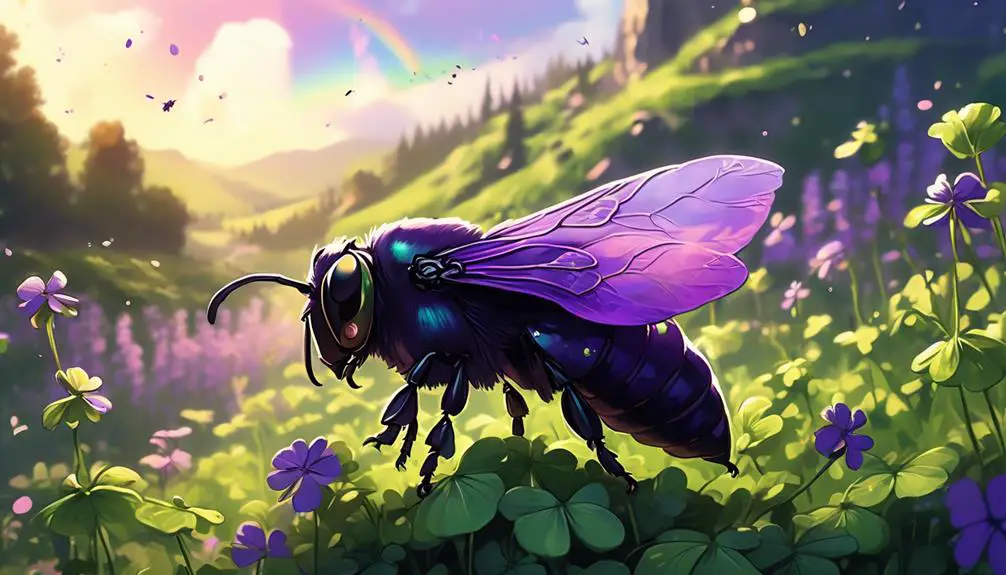
Violet Carpenter Bee Ireland
Imagine a world where giants roam, buzzing past you like mini aircrafts – that's the realm of the Violet Carpenter Bee. You've probably spotted these intriguing creatures in Ireland, their iridescent bodies catching the sunlight in mid-flight.
They're not just a pretty sight, though. These bees play a crucial role in our environment, acting as major pollinators. But what exactly makes the Violet Carpenter Bee unique? What role does it play in Ireland's ecosystem? And, more importantly, what's being done to ensure their survival?
Let's embark on this journey of discovery together, shall we?
Key Takeaways
- Violet Carpenter Bees are important for plant reproduction and contribute to biodiversity and a healthy ecosystem in Ireland.
- They prefer woodland habitats and nest in dead or dying wood, particularly in oak, pine, and decaying willow trees.
- Threats to Violet Carpenter Bees include habitat loss, pesticide use, and urbanization, but conservation efforts such as habitat restoration and pesticide-free zones are being implemented.
- When observing Violet Carpenter Bees, it is important to maintain a respectful distance, avoid disturbing them or their nests, and use binoculars or a camera with a zoom lens for observation.
The Violet Carpenter Bee's Characteristics
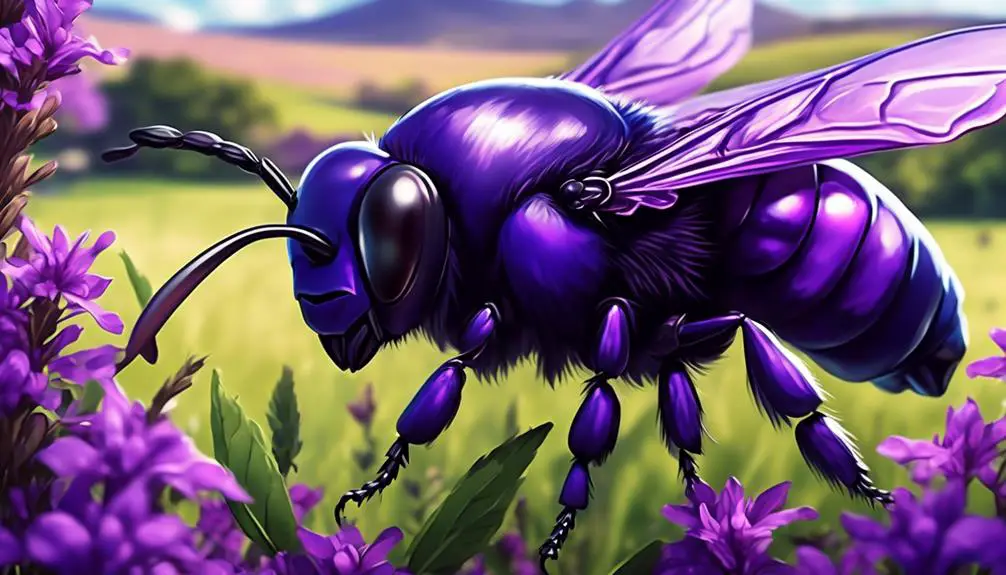
One can easily identify the Violet Carpenter Bee by its unique set of characteristics. The most striking of which is its iridescent violet-black colour that sets it apart from other bee species. The male is slightly smaller than the female, and they're both among the largest bees in Europe, reaching up to 3cm in length.
You'll also notice that it has a robust body, covered with dense hair. Although it's predominantly black, it shimmers with a purple hue in sunlight, hence the name. The bee's wings are dark, almost smoky, adding to its distinct appearance.
The Violet Carpenter Bee's antennae are long and thread-like. It has powerful jaws for chewing through wood, where it nests. Females are equipped with a stinger, while males lack this feature.
Your attention might be drawn to its unique flight pattern. Unlike most bees, it has a slow, hovering flight, which is quite a sight.
In terms of habitat, they're often found in woodland areas, gardens, and orchards. They're solitary creatures, preferring to live and work alone. Despite their intimidating size, they're generally harmless to humans.
Understanding these characteristics can help in identifying and appreciating this fascinating species.
Habitats of Violet Carpenter Bees
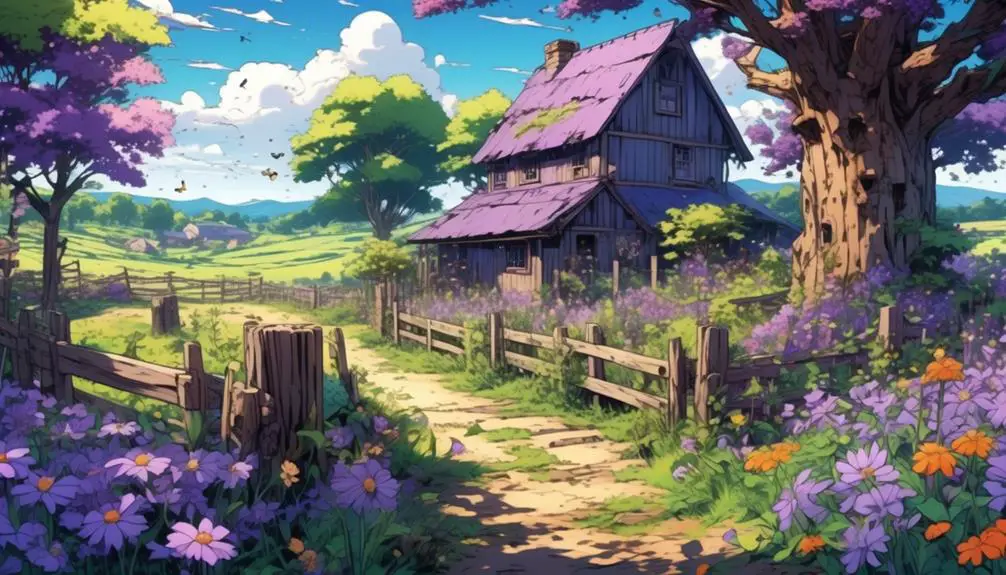
Exploring the habitats of Violet Carpenter Bees, you'll find these solitary insects primarily in woodland ecosystems, flourishing amidst the bark and branches. They're gifted borers and can make hollows in dead or dying wood, creating an ideal nesting site.
In Ireland, these bees have colonized wooded areas, parks, gardens, and even urban locales. They're not choosy and often reside in any dead tree or timber that's soft enough to bore into. You'll find them in oak, pine, and especially, decaying willow trees.
It's noteworthy that they prefer sunlit spots for their nests. They're sun-loving insects and their nests often face in a direction that receives ample sunlight. In contrast, they avoid areas with heavy rainfall or high humidity, as these conditions are unfavorable for their lifestyle and reproduction.
The Violet Carpenter Bee's habitat is under threat due to deforestation and removal of dead wood for aesthetic reasons and firewood. Therefore, it's crucial to conserve these habitats to ensure the survival of this species. So next time you see a dead tree, remember, it could be a potential home for a Violet Carpenter Bee. It's all about looking at the world through a 'bee's eye view'.
Role in Ireland's Ecosystem
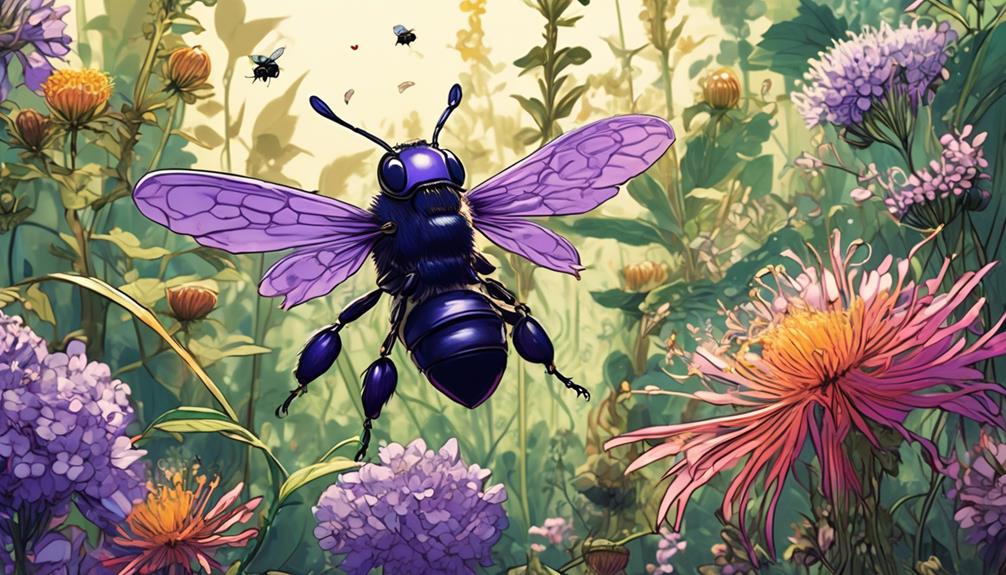
While appreciating their adaptability and resilience in diverse habitats, let's not overlook the significant role that Violet Carpenter Bees play in Ireland's ecosystem. These bees are key pollinators, contributing to the biodiversity of the Irish flora.
Role | Importance | Example |
|---|---|---|
Pollination | Essential for plant reproduction | Orchids, clover, and fruit trees |
Biodiversity Increase | Promotes a healthy and balanced ecosystem | Supports a variety of plant and animal species |
Habitat Creation | Their burrowing behavior aids soil aeration | Enhances the growth of various plant species |
Food Source | They provide food for other creatures | Birds, spiders, and other insects |
Seed Dispersal | They help in the spread of plant species | Spreading pollen to different flowers |
Your understanding of the Violet Carpenter Bee's function in Ireland's ecosystem is crucial. Recognizing their contribution can encourage efforts to protect and conserve these remarkable insects. So, if you see a Violet Carpenter Bee in your garden, remember, they're not just visitors; they're hard at work maintaining the balance of your local ecosystem.
Threats and Conservation Efforts
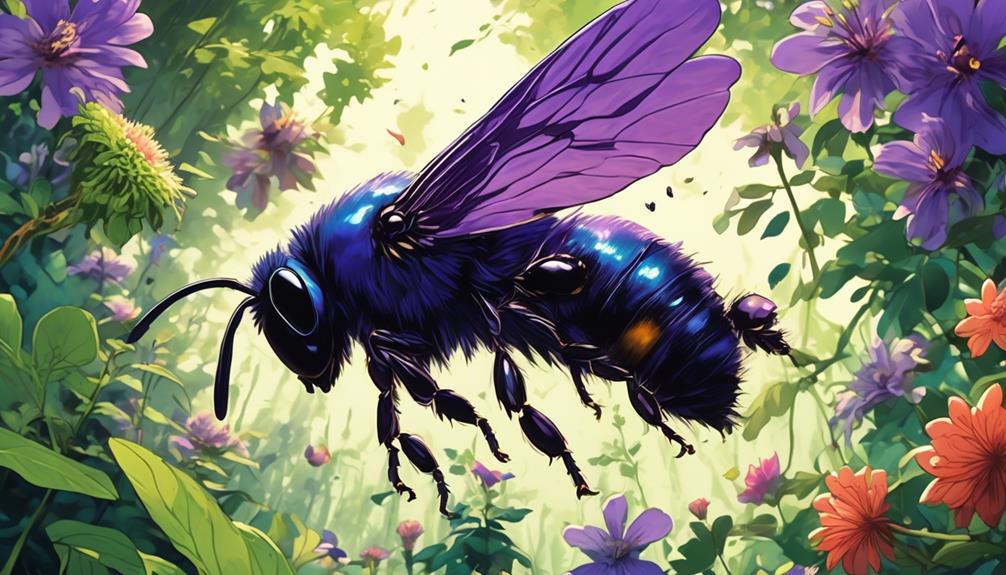
Despite their crucial role in Ireland's ecosystem, Violet Carpenter Bees face numerous threats that underscore the need for dedicated conservation efforts. Their population is mostly threatened by habitat loss due to deforestation and urbanization. The use of pesticides in agriculture also poses a significant risk to their survival, as these chemicals can have lethal effects on bees.
As you can imagine, these threats have serious implications for the conservation of Violet Carpenter Bees. However, there's hope. Ireland is making concerted efforts to protect these vital pollinators. Conservation programs are being implemented across the country to restore and maintain natural habitats where these bees can thrive. These initiatives include reforestation projects and the creation of pesticide-free zones.
Also, you can contribute to these efforts. By planting bee-friendly flowers in your garden, you're not just beautifying your surroundings, but also providing a food source for the bees. And if you can, avoid using pesticides that harm bees.
Observing Violet Carpenter Bees Safely
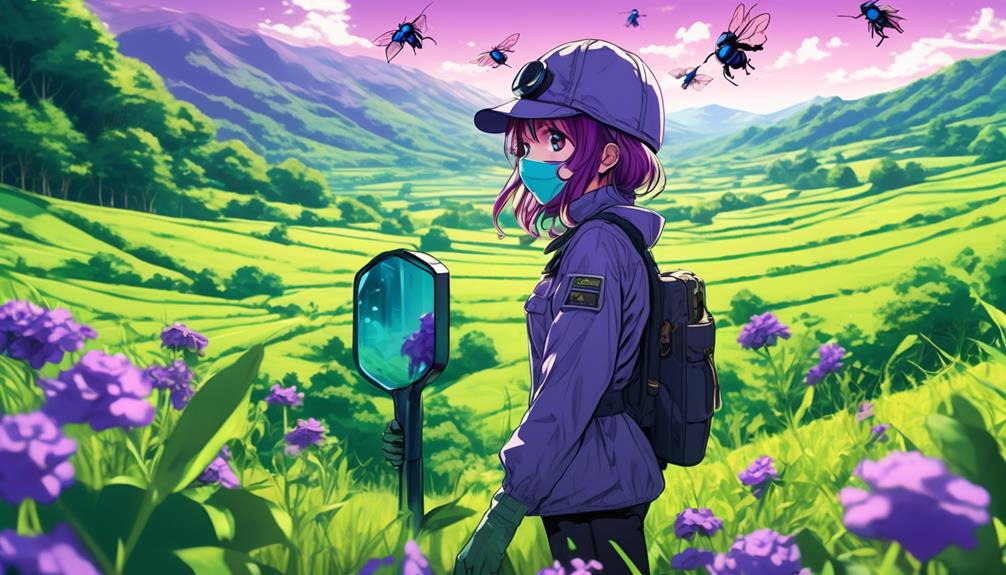
In your efforts to protect and conserve these beautiful creatures, it's also important to learn how to observe Violet Carpenter Bees in a safe and non-disruptive manner.
These insects, known scientifically as Xylocopa violacea, are fascinating to study, but it's vital that you maintain a respectful distance.
For starters, avoid touching or disturbing the bees or their nests. These bees are solitary creatures and they'll often construct their nests in dead wood or plant stems. If you're lucky enough to spot one, use binoculars or a camera with a zoom lens to observe them from afar. Remember, your safety is paramount and these bees can sting if they feel threatened.
Additionally, it's best to observe them during the warmer months, from late spring to early autumn, when they're most active. Be patient and still, their buzzing noise or the sight of them burrowing into wood will give their presence away.
Take note of their distinct purple-black sheen, a characteristic that distinguishes them from other bees.
Conclusion
So, you've journeyed with the violet carpenter bee, marveling at its unique characteristics and adaptive habitats. You've appreciated its significance in Ireland's ecosystem and understood the conservation threats it faces.
Next time you're exploring nature, remember to observe these fascinating bees with respect and caution. Their survival depends on our collective efforts.
This colorful pollinator's story is a vital part of our planet's ecological narrative, intricately woven into Ireland's lush landscape.

